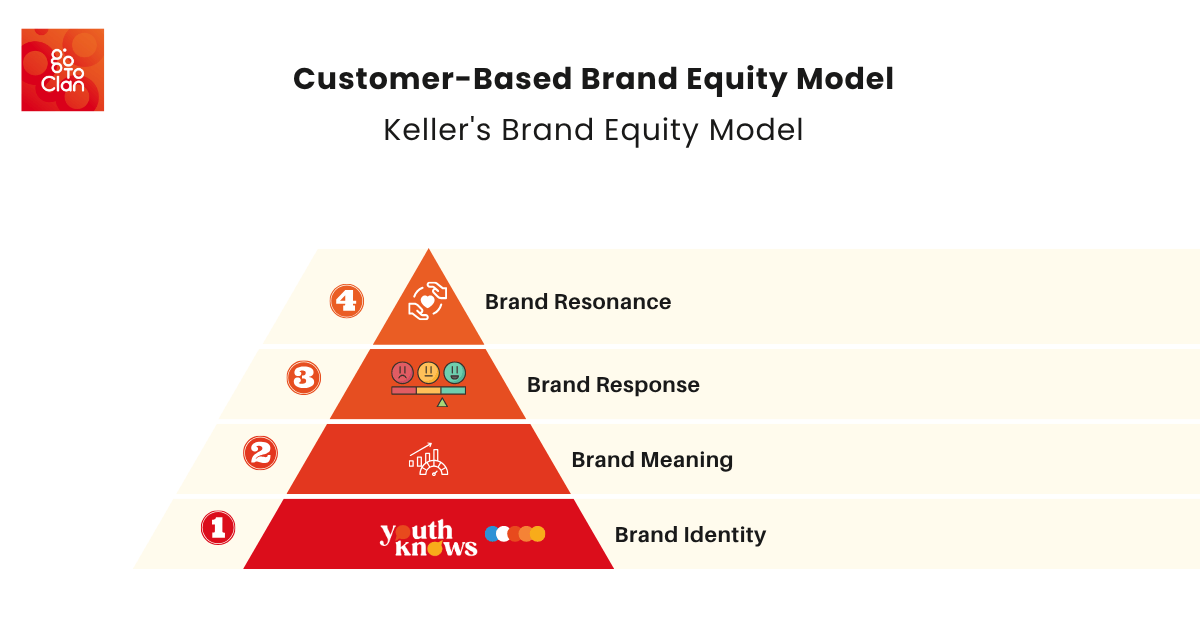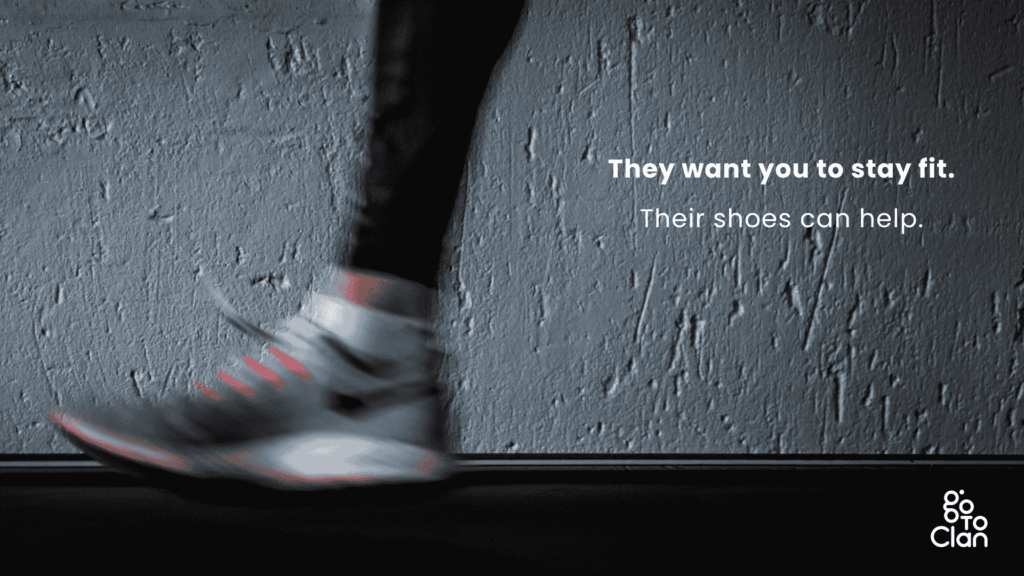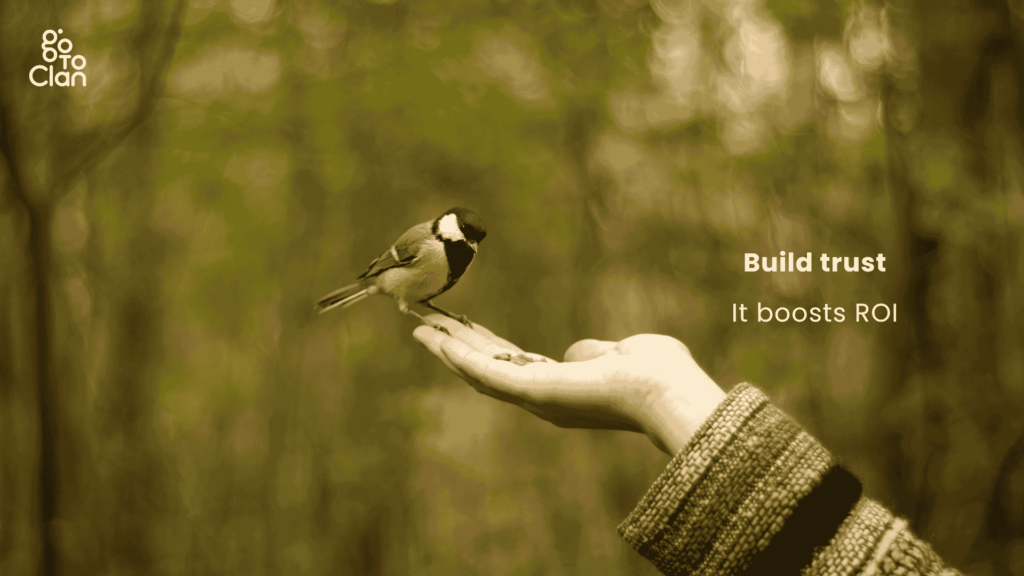
Keller’s Brand Equity Model is also known as the CBBE model. It stands for the Customer-Based Brand Equity model. If you are new to the world of branding, this model can help you build a perfect brand identity for your business.
The CBBE model stands firm on 4 major pillars:
- Brand Identity
- Brand Meaning
- Brand Response
- Brand Resonance
While you read this blog, make sure you keep your business or your client’s business in mind. So, let’s start.
4 Important Stages of Keller’s Brand Equity Model
1. Brand Identity – The First Step in Building Brand Equity
This is your brand’s introductory phase. Do not confuse this with a new brand’s journey. A company sustaining itself for years can also go through the first step in building brand equity. This is the fun part of Keller’s Brand Equity Model (CBBE Model).
This is about who you are. Not what you do, but how do people know you?
When you tell your friend about your crush, what is the first thing you mention? Looks. She has a beautiful smile. He has a great personality. Similarly, when you are building brand equity, the first thing you do is build a strong brand identity.
This includes everything: logo, tagline, brand colors, packaging, etc. Your only goal in this phase is to make sure that people instantly recognize you.
What Is Brand Identity?
Brand identity is how your brand looks, sounds, and feels to the world. It’s the first impression people form when they see you. This includes:
- Your name and logo – When Apple entered the market, it got attention with its name. A tech product company named Apple. The bitten apple in the logo created curiosity.
- Colors and typography – I can give various examples like Coca-Cola, McDonald’s, etc. But I’ll give a better example. On the way from my previous office to my home, I had seen a board with Aishwarya written on it. Though I used to see that board almost every day, I never paid attention to that board. Wonder why? The font seemed like a boutique or travel agency’s font. One day, my friend met me near my office and he asked me to join him for dinner. I said okay. He took me to Aishwarya. That day, I got to know that Aishwarya was a Chinese Restaurant.
- Your tone of voice – CRED is better known for its quirky ads. Though it’s a credit card app, their brand communication is fun. Similarly, Zomato has a fun & lively tone of voice. On the other hand, Deloitte has a formal tone. A branding expert can help you connect better. The new generation of GenZ would connect better with a quirky and witty tone than a formal one.
While building a customer-based brand equity (CBBE model), decide your appearance carefully. There is no rule book that states a coffee brand should have brown as a primary color. A premium brand for an elite niche can use bold, vibrant colors.

In the CBBE Model, identity is about awareness. Before people can love you, they need to remember you. Brand identity isn’t just for big brands. Even startups can win hearts with a strong, clear identity.
Examples of Strong Brand Identity
- McDonald’s: Even toddlers recognize the golden arches.
- Amul: The polka-dot girl makes the brand memorable.
- GoToClan Example: We have helped many companies, from SaaS startups to Restaurants, build brand identities with a bold logo, vibrant palette, and unified messaging.
How to Build a Memorable Brand Identity
- Be consistent: Same logo, same colors everywhere.
- Stand for something: Don’t just look good, represent an idea.
- Make it simple: Complicated logos or names are difficult to remember.
2. Brand Meaning – Making People Feel Your Brand
Once people know you, they’ll ask: “What do you stand for?”
This is where Brand Meaning comes in; the second level of Keller’s Brand Equity Model. In this step, focus on how well your product delivers. It’s about how people perceive your brand.
It is about how simply you explain what your product offers. Beyond functionality, tell compelling stories that connect with your audience emotionally, making them care about your brand on a deeper level. Finally, show your values by aligning with causes your audience supports, so they see your brand as one that reflects their beliefs and aspirations.
Examples of Brand Meaning
- Volvo: People associate it with safety; it’s more than just a car.
- Nike: Not just footwear. It’s about empowerment and “Just Do It.”

How to Build Brand Meaning
- Deliver on promises: Performance builds trust.
- Tell stories: Emotional campaigns make people care.
- Show your values: Align with causes your audience loves.
People don’t just buy features and offers, they buy beliefs and emotions. Go To Clan’s founder, Sagar Udale, posted an interesting angle. Remember the famous Deewar dialogue- Mere pass bungla hai, gadi hai, bank balance hai. Tumhare paas kya hai? Then Shashi silences him- Mere paas Maa hai. People want Maa. You should read the entire post; it’s too good.
3. Brand Response – Shaping Customer Opinions
Now customers know you and what you stand for. But do they like you? Do they like what you are selling? Phool, a brand that sells Pooja materials. Personally, I find it super expensive. I would never buy their products because I can get those products on every street in my area. But they have some loyal consumers who admire their organic and original products.
Understand your customer’s response. In this third stage of the CBBE Model, they shape their opinions, judgments, and feelings about your brand. In the first stage, Keller’s Brand Equity Model, first, you should observe their response and then work on it.
If they are engaging with your social media posts and spending enough time inquiring about you but not buying your products, you need to build trust. This is one of the most important stages of the CBBE Model as customers evaluate:
- Quality: Does this brand deliver value?
- Credibility: Can I trust them?
- Relevance: Is it worth my money?
Examples of Brand Response
- Apple: People believe it’s premium and innovative, so they pay more.
- Tanishq: Seen as trustworthy for authentic jewelry.

How to Improve Brand Response
- Collect and showcase reviews.
- Be transparent about pricing and processes.
- Back claims with proof (awards, certifications, testimonials).
4. Brand Resonance – Turning Customers into Loyal Advocates
This is the top of the CBBE pyramid, Brand Resonance.
It’s when your customers don’t just buy from you, they love you, advocate for you, and stick with you for life. For instance, a guy driving a TATA would always recommend TATA cars as they are strong and smooth. Or an iPhone person would always promote iPhone’s features.
That’s free marketing for you. Is it easy? No! Your product should be exceptional, value for money, and your company should offer excellent customer service. When you help your consumers in their difficult times, they remember your generosity.
What Is Brand Resonance?
Resonance means:
- Loyalty: They keep coming back.
- Community: They join groups or engage with other customers.
- Emotional Connection: They feel your brand is part of their identity.
Examples of Brand Resonance
- Harley-Davidson: Riders form clubs and see their bikes as part of who they are.
- Zomato: Customers engage with the brand like it’s a witty friend.
How to Build Brand Resonance
- Create communities: Online groups, events, or loyalty clubs.
- Offer exclusivity: Insider perks or early access.
- Stay personal: Send thank-you notes, personalized offers, and behind-the-scenes updates.
Wrapping Up
The CBBE Model isn’t just a theory; it’s a step-by-step guide to turn your company into a brand. From building awareness to creating emotional loyalty, each stage helps brands grow from being a product to becoming a part of people’s lives.
At GoToClan, we use Keller’s Brand Equity Model to help brands find their voice, shape perception, and build communities that last. Contact us for a free consultation.